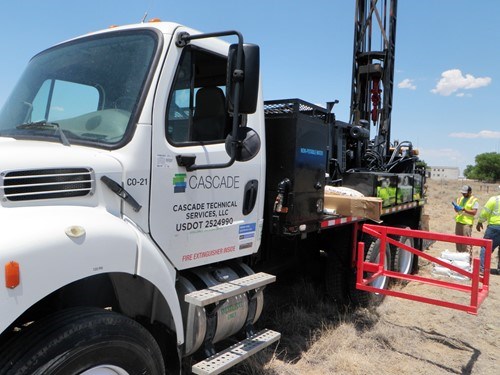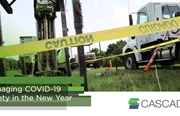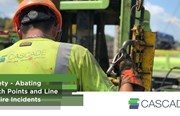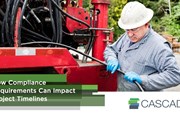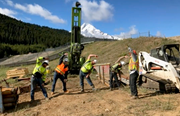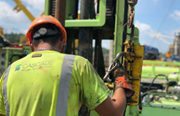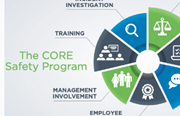How Compliance Requirements Can Impact Project Timelines
By: Cascade EnvironmentalAs an environmental consultant, coordinating the work of your contractors can be a headache—and it doesn’t help when there are delays that don’t make sense. Although work can be held up by obstacles with the site or equipment, sometimes delays are actually the result of complying with Department of Transportation (DOT) safety regulations. In this blog post, I’ll cover a few of the most common—because if they’re known, project timelines can be forecasted more accurately.
If you’re interested in learning more about how safety can (and does!) affect project planning and your business, register for our upcoming webinar, The Business of Safety: How to Optimize Projects and Win More Work Utilizing Safety Practices.
Contrary to common belief, DOT regulations aren’t just for large trucking fleets—they also apply to many types of vehicles utilized in the environmental services industry, including support vehicles and even some pick-ups. Nearly all their rules are designed to improve safety on the road, but many of them also keep equipment and personnel safe on project sites, too. Let’s talk about how.
HOURS OF SERVICE RULES
The DOT regulates how many hours per day and week a driver may operate a Commercial Motor Vehicle in order to reduce fatigued driving. One of the key pieces is the 30 minute break requirement. The DOT requires that a driver has taken a 30 minute break within the previous eight hours in order to drive. Taking this break in the middle of the day as a lunch break has several benefits:
- It complies with DOT rules
- It complies with many states’ labor laws
- It allows the driver to eat and rest
- During extreme weather, it allows the individual to cool off or warm up
- It reduces fatigue for the afternoon, which can reduce the possibility of injuries and incidents
Providing adequate rest for employees isn’t just about being nice—it’s about ensuring they are in a state to work safely and efficiently. In very hot or cold weather, an extended break (and several smaller ones) may be needed to ensure crews don’t suffer heat related illness (HRI) or develop hypothermia.
VEHICLE INSPECTIONS
Vehicle safety inspections reduce both breakdowns and accidents, in vehicles of any size, by identifying and correcting defects prior to operation. That’s why the DOT requires them. During annual (or quarterly in some states) inspections, internal components of the vehicle like the brakes are examined and certified safe. Daily inspections should be performed by the driver prior to the start of the work day, and include tasks such as checking the oil and connections, examining the tires, looking at the windshield, etc.
Drivers often perform vehicle inspections off site. If they identify an issue with equipment, it may cause a delay in mobilizing to the site, or on the project while they address it. However, fixing equipment before it breaks down or causes injury ultimately saves the project lost time and money that may have proven more extensive.
VEHICLE MAINTENANCE
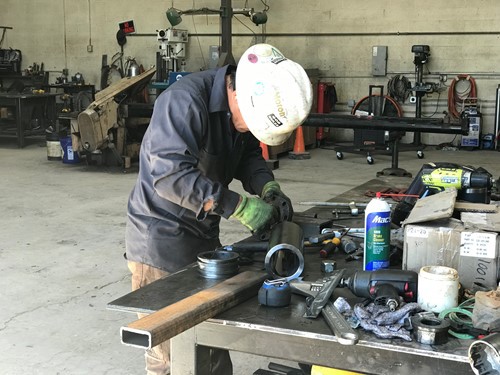
The DOT even regulates maintenance schedules. Properly scheduling preventative and corrective maintenance will allow equipment to pass inspections, reduce breakdowns and reduce accidents. These are all issues that go beyond the road and impact a project site, as well.
QUALIFIED DRIVERS

DOT regulations stipulate that drivers of commercial vehicles must be qualified and fit to drive. Having the appropriate driver’s license is the first step, but drivers must also have avoided license suspensions, moving violations and other related infractions.
If a driver were to have his or her license suspended, that could either mean being in violation of DOT regulations—or at the last minute having no driver to move equipment to the project site.
Those delays are frustrating, and often preventable. Cascade goes beyond running motor vehicle reports on drivers every year and has contracted with an outside vendor to actively monitor motor vehicle reports throughout the year. This means that if a driver received a moving violation, Cascade would be notified immediately by the vendor so a new driver could be identified for the project.
DOT-related project delays are frustrating, but understanding the most common types can help with developing realistic project timelines, and with finding contractors who safely mitigate the impact those regulations can have.
If you are interested in learning more about how safe practices translate to good business, register for our webinar, The Business of Safety: How to Optimize Projects and Win More Work Utilizing Safety Practices.
